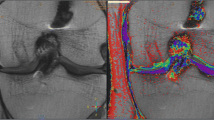Abstract.
The treatment of full-thickness cartilage defects still poses problems. One of the currently applied methods to cover defects in the knee joint is osteochondral autografting. The purpose of this prospective study was to assess the outcome of this surgical treatment. Between August 1996 and July 1999, osteochondral transplantation was performed in 38 patients (mean age 37 years). The size of the lesion varied from 1.5 cm2 to 6.5 cm2. Before the operation the patients had suffered symptoms for an average of 15 months. Osteochondral grafts were harvested from the non-weight-bearing area of the femoral condyle. Patients were evaluated at a mean follow-up of 36 (range 23–58) months. The review protocol included clinical examination, X-ray, and magnetic resonance imaging (MRI). For comparative evaluation the HSS (Hospital for Special Surgery), Lysholm and Tegner activity scores were used. In 86% of the patients studied results were rated good or excellent. There were no infection, thrombophlebitis, or evidence of graft loosening. We conclude autologous osteochondral transplantation is an efficacious and valid one-step repair of the localized damaged articular surface of the knee. Nevertheless, in the future, studies with longer follow-ups and comparison with other forms of biologic resurfacing will be necessary.
Résumé.
Le traitement des lésions du cartilage articulaire pose encore des problèmes thérapeutiques. Une des méthodes actuellement employées pour réparer des lésions dans l'articulation du genou est l'autogreffe ostéochondrale. Le but de cette étude est d'évaluer les résultats de ce traitement chirugical. Dans la période du août 1996 jusqu'au juillet 1999, 38 patients (age moyen: 37 ans) ont éte traités par une autogreffe ostéochondrale. La taille de la lésion variait de 1.5 cm2 à 6.5 cm2. Avant d'être opérés, les patients montraient des symptômes pour une moyenne de 15 mois. Les greffons ostéochondraux avaient été prélevés dans une zone non portante du condyle fémoral. Les patients ont été surveillès pendant une periode moyenne de 36 mois (de 23 à 58 mois). Le protocole du contrôle incluait des examens cliniques, des radiographies et du MRI. L'évaluation comparative a été executée par les scores d'activités HSS (Hospitale for Special Surgery), Lysholm et Tegner. Dans les 86%, les résultats etaient bons ou excellents. Il n'y a pas eu d'infection ni de thrombophlébite ni de signe que les greffons se détachaient. Nous concluons donc que l'autogreffe ostéochondrale est un moyen efficace, qui peut être exécuté par une seule intervention, pour réparer les lésions localisées de la surface articulaire du genou. Néanmoins, dans l'avenir d'autres études assurant des suivis plus longs et des comparaisons avec d'autres formes de la reconstitution biologique de la surface seront nécessaires.
Similar content being viewed by others
Author information
Authors and Affiliations
Additional information
Electronic Publication
Rights and permissions
About this article
Cite this article
Klinger, .HM., Lorenz, .F., Otte, .S. et al. Treatment of cartilage defects with autologous osteochondral grafts in the knee joint. Eur J Orthop Surg Traumatol 12, 26–29 (2002). https://doi.org/10.1007/s00590-002-0005-x
Received:
Accepted:
Issue Date:
DOI: https://doi.org/10.1007/s00590-002-0005-x




